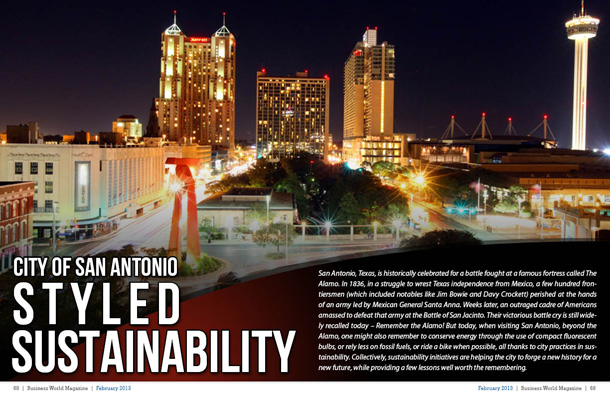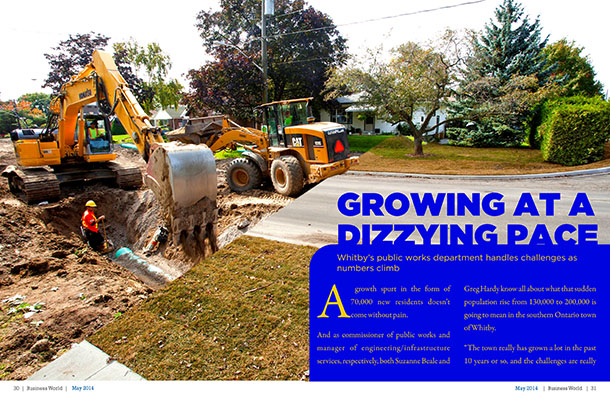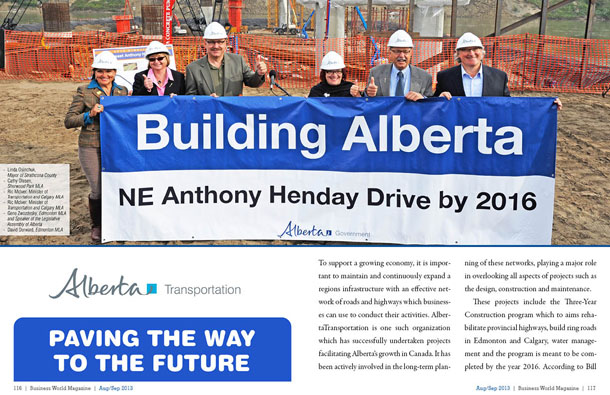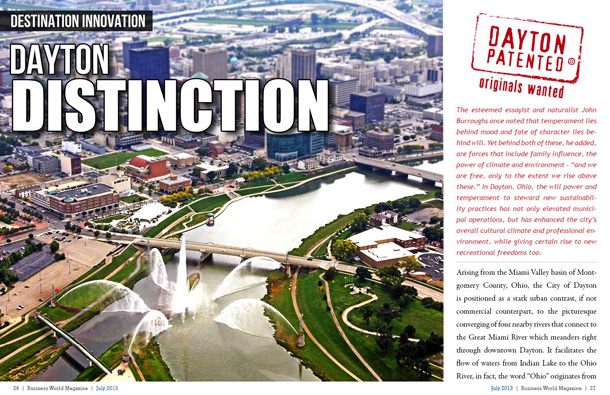
Destination Innovation
Dayton Distinction
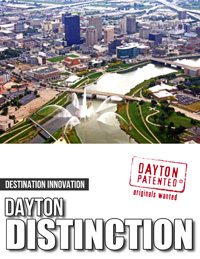
The esteemed essayist and naturalist John Burroughs once noted that temperament lies behind mood and fate of character lies behind will. Yet behind both of these, he added, are forces that include family influence, the power of climate and environment – “and we are free, only to the extent we rise above these.†In Dayton, Ohio, the will power and temperament to steward new sustainability practices has not only elevated municipal operations, but has enhanced the city’s overall cultural climate and professional environment, while giving certain rise to new recreational freedoms too.
Arising from the Miami Valley basin of Montgomery County, Ohio, the City of Dayton is positioned as a stark urban contrast, if not commercial counterpart, to the picturesque converging of four nearby rivers that connect to the Great Miami River which meanders right through downtown Dayton. It facilitates the flow of waters from Indian Lake to the Ohio River, in fact, the word “Ohio†originates from an Iroquois Indian expression that equivocates to “Good River.†Of course, Dayton has figured in a good bit of meaningful history, such as being distinguished as “The Birthplace of Aviation†as homage to the pioneering avian exploits of hometown heroes Wilbur and Orville Wright. In more modern times, Dayton has garnered distinction as a home to the aviators and other military personnel defending our national interests through operations at Wright-Patterson Air Force Base, one of the most complex, technologically-capable and critical of command centers for the United States Air Force. Dayton has also been made home by innovators of industry which include John Henry Patterson whose National Cash Register Company produced the very first cash register machine, followed by countless more. It was also here that Charles Kettering founded the Dayton Engineering Laboratories Company (DELCO) and secured patents for developing innovations such as the electronic ignition and lighting systems used in the automotive industry, and the air conditioning coolant known as Freon, as well as lots of other cool stuff. Nationally, Dayton has been heralded as having one of America’s most-affordable housing markets, the best of hospital quality and the leading of education opportunities with respect to programs at area institutions like the University of Dayton, Wright State University, Central State University and Sinclair Community College. This city is also renowned as one of the most business-friendly communities in America (as well as having the best in business tax structure systems) and is credited as one of the most desirable of environments for locating a business. That makes sense since more than half of the leading population centers in America and Canada, not to mention more than half of leading manufacturing operations, are less than a 90-minute flight from Dayton International Airport, or within 500 miles over-the-road that is shared by some 155,000 motor vehicles which traverse daily through Dayton’s Interstate 70/75 corridor. A national leader in arts, education and enterprise, these factors all add luster to Dayton being conferred long ago with the nickname of “Gem City,†a moniker which stuck following an article published in an 1845 edition of the Daily Cincinnati Chronicle that eloquently stated: “The most indifferent observer will not fail to notice Dayton. The wide streets, kept in such excellent order, the noble blocks of stores, filled with choice, and, of course, cheap goods, and, more than all, the exceeding beauty and neatness of the dwellings…It may be fairly said…that Dayton is the gem of all our interior towns.”
Despite the fact that it already has so much working in its favor, city leaders have been busy adding additional sparkle to this gem of urban spaces by advancing sustainability practices which are now helping Dayton transition from good to great.
Preservation & Conservation
With full respect for the range of activities that have recently occurred, it must be noted that initiatives in eco-sensitivity or sustainability are not something new to the City of Dayton. As Sustainability Manager Donna Winchester says, “We’ve always been very environmentally-aware as a community.â€Â More than 25 years ago, Dayton advanced protocols which struck a balance between expanding economic development and the needs for a safe, and abundant, supply of drinking water. The City helped created a comprehensive, multi-jurisdictional Source Water Protection Program complemented by land use and controlled zoning requirements, monitoring of business operations as well as groundwater conditions, chemical inventory reporting, time-critical investigations and ongoing studies which have frequently prompted updates to the program. The program encompasses more than 6,000 acres which spreads even into neighboring communities, fostering focused collaboration in ensuring the integrity of the regional water supply. That program has been in place since 1988.
More recent sustainability initiatives were prompted, in part, by the city’s pledge of support to U.S. Conference of Mayors Climate Protection Agreement, an ideal forged in 2005 by mayors throughout the United States dismayed by the fact the United States refused to participate in international efforts to curb greenhouse gas emissions by signing the Kyoto Protocol. In response, some 141 mayors from America resolved to tackle challenges within their own respective communities and achieve what the federal government could, or would, not. At least 500 city mayors have since pledged their support to the climate protection agreement, and in Dayton, that led city leaders to consider, “What can we do next?†says Winchester.
“We thought about what would be important for the future as well as what was important in that moment. We thought about what would be the right thing to do for what we had in place, and what steps we could take to keep moving forward,†says Winchester.
That resolve led to a plethora of community outreach and orchestrated advocacy that extended into the commercial sector, schools and the public-at-large, yet as Dayton City Manager Tim Riordan says, “We didn’t just want to be seen as a good partner in this process, but as a good leader.â€
This meant the city would have to look within its own operations to determine how it could best lead by example. Early on, Dayton determined to measure its carbon footprint and devise solutions that would not only help reduce energy consumption, but pose benefits for the environment too. With funds secured from a Federal Energy Efficiency and Conservation Block Grant, Dayton contracted with Fairborn-based, Honeywell Building Services to conduct an energy-usage study and greenhouse gas emission analysis involving more than 700 utility accounts maintained by the city. Honeywell measured data that dated back to 2006 to determine operations which didn’t reach federal benchmarks of efficiency complicit with standards affiliated with EnergyStar. The results of the energy audit helped the city identify a number of opportunities for improvement, and in the time since, Dayton has not only conserved energy, but significantly reduced utility costs. Those changes have included retrofits to lighting fixtures, installation of a vegetated roof on top of City Hall (which not only reduces heating and cooling costs, but helps mitigate pollutants from storm water runoff) and building escalators were designed to function on-demand, powering-off when not in actual use. The traffic lights have even been converted to LED systems and this alone has resulted in more than 2 million kilowatt-hours of savings per year.
Waste recycling was also significantly improved. Winchester explains that Dayton had adopted a weekly recycling program many years earlier, but with budget cuts, the city went to an every-other-week collection cycle, and almost terminated the program. A portion of stimulus money was used to resurrect the program. Through a deal with the city’s disposal-service provider, the city would receive a discount on waste services if it could collect as much as 500 tons of recycled goods per month. City residents were provided with 96-gallon containers and for all who recycled, routine drawings were held allowing someone to win as much as $100 which helped secure a lot of participation. The city ultimately achieved its goal and today, waste is not only being spared from local landfills, but waste fees have been reduced by more than $100,000 annually.
A Greater Shade of Green
City Manager Riordan points to Dayton’s partnership with Montgomery County on a Green Business Certification program as one of the most significant and successful of initiatives that have helped promote sustainability while also helping businesses achieve greater energy savings as well as distinction for their own respective environmental stewardship. A voluntary program designed to help businesses take basic green measures to reduce their ecological footprint, reduce their energy and resource use, and save money in the process. Certification is awarded after reviews of operations involving solid waste reduction & recycling, environmentally preferable purchasing practices, energy conservation, water conservation and pollution prevention protocols. While certain checklist actions are required for each category, the certification process is also very flexible, allowing businesses to choose from a broad range of actions. Businesses are also allowed to develop their own innovative actions that are consistent with the program’s principles. As Riordan says, “It is not enough to simply say that you’re going to be green, the program helps businesses identify solutions and implement practices which help them demonstrate that they’re green, and they gain savings in the process.†Small businesses were provided free energy audits as part of the process. Since adoption of the program, more than 200 separate enterprises have achieved certification as a Green Business, and the number continues to grow.
Dayton has also changed zoning codes which now allow for greater adoption of alternative energy solutions as well as environmentally-friendly practices such as bee harvesting or the creation of community gardens. Many businesses and resident alike are beginning to rely more on solar-power as well as energy produced from wind turbines. Examples include Sinclair Community College which is using wind turbines to generate power for some of its operations. In another case, a car dealership is now using a wind turbine to generate the power used to light its car lot. A former Cadillac dealership located right off of North Main St. in Dayton has been taken over by a new company known as Millennium Reign Energy which has transformed that site into a one-stop-shop for all manner of wind, solar or hydrogen power-producing solutions. Dozens of community gardens have also blossomed into life through the efforts of the city partnering with local volunteer organizations and schools.
Dayton schools have really stepped-up in terms of supporting sustainability initiatives says Water Department Environmental Manager Michele Simmons. She indicates that both the University of Dayton and Sinclair Community College have developed curriculum as well as special student-led projects that focus on sustainability. In one case, sustainability isn’t simply a topic of education, but a cause for celebration. Dayton’s annual Water Festival is a collaboration involving area schools and hundreds of community partners who sponsor science workshops, wildlife demonstrations, games and other activities that collectively promote the preservation of eco-systems and water conservation. Simmons says several thousand area Fourth Graders traditionally participate in the event, and have a lot of fun while learning about wildlife and how to become more environmentally responsible.
Biking and Kayaking
 With its seasonal climate, nature trails and winding waterways, Dayton has much to offer those who love the outdoors, and this has even been bolstered by sustainability efforts. Aaron Sorrell, Dayton’s Planning and Community Development Director, says area residents are now benefitting from new recreational opportunities for bikers and kayakers. On the biking side, Sorrell says Dayton’s flat downtown terrain accommodates certain convenience for those who may prefer to pedal when moving from point to point. To encourage biking, which further aids in reducing the city’s overall carbon footprint, more than 200 bike racks have been installed in the downtown corridor. Yet, on a much larger scale which reflects the city’s investment in biking, Sorrell says Dayton has developed a regional network of interconnected bike lanes that extend for more than 320 miles. It is now one of the longest bike paths in America, prompting the League of American Bicyclists to designate Dayton as one of the most bike-friendly cities in America.
 The area waterways have also been made more accessible. While Dayton’s river system is indeed beautiful, these same waters have figured in some rather ugly history. The Great Flood of 1913 put Dayton at the epicenter of one of the worst national disasters in history, with human lives, commercial enterprise and city infrastructure decimated in the process. In the wake of that tragedy, an elaborate levy system was created to mitigate the potential for such flooding ever again. While those efforts have proven protective over time, it also resulted in diminishing opportunities for recreational activities on the water. Sorrell says Dayton has recently invested more than $3 million in renewed dam infrastructure, designed in such a way as now allow for a new extensive kayak course. As Sorrell says, “People can now use the river instead of just looking at it.â€
A Sense of Place
Biking and river kayaking, along with collegiate and career opportunities, are making Dayton an increasingly popular draw for what Rodney describes as “bright, young, energetic professionals.†To that point, downtown Dayton presently has the lowest residential vacancy rates in its history (a 95% occupancy rate), and Sorrell credits sustainability practices as helping to promote new “sense of place.†And that’s a point not lost on Shelley Dickstein, Assistant City Manager for Strategic Development. Dickstein says beyond the safeguarding of the environment, beyond the improvements in water conservation, waste recycling and energy consumption which have reduced costs for operating businesses and the city alike, beyond all this; sustainability practices have added to the creation of new jobs, new businesses and a new quality of life for all who call Dayton home. In time, Dickstein believes such practices will also prove helpful in driving future economic growth.
Air quality, water quality and prudent use of tax dollars to protect, preserve and promote the beauty of its natural environment can certainly add to the allure of a community recognized for its business-friendly professional environment. In Dayton, the continuing drive for “green-friendly†will cast an excellent emerald hue to this Midwestern gem of American cities.
For more information, please visit their website at: Â City of Dayton




